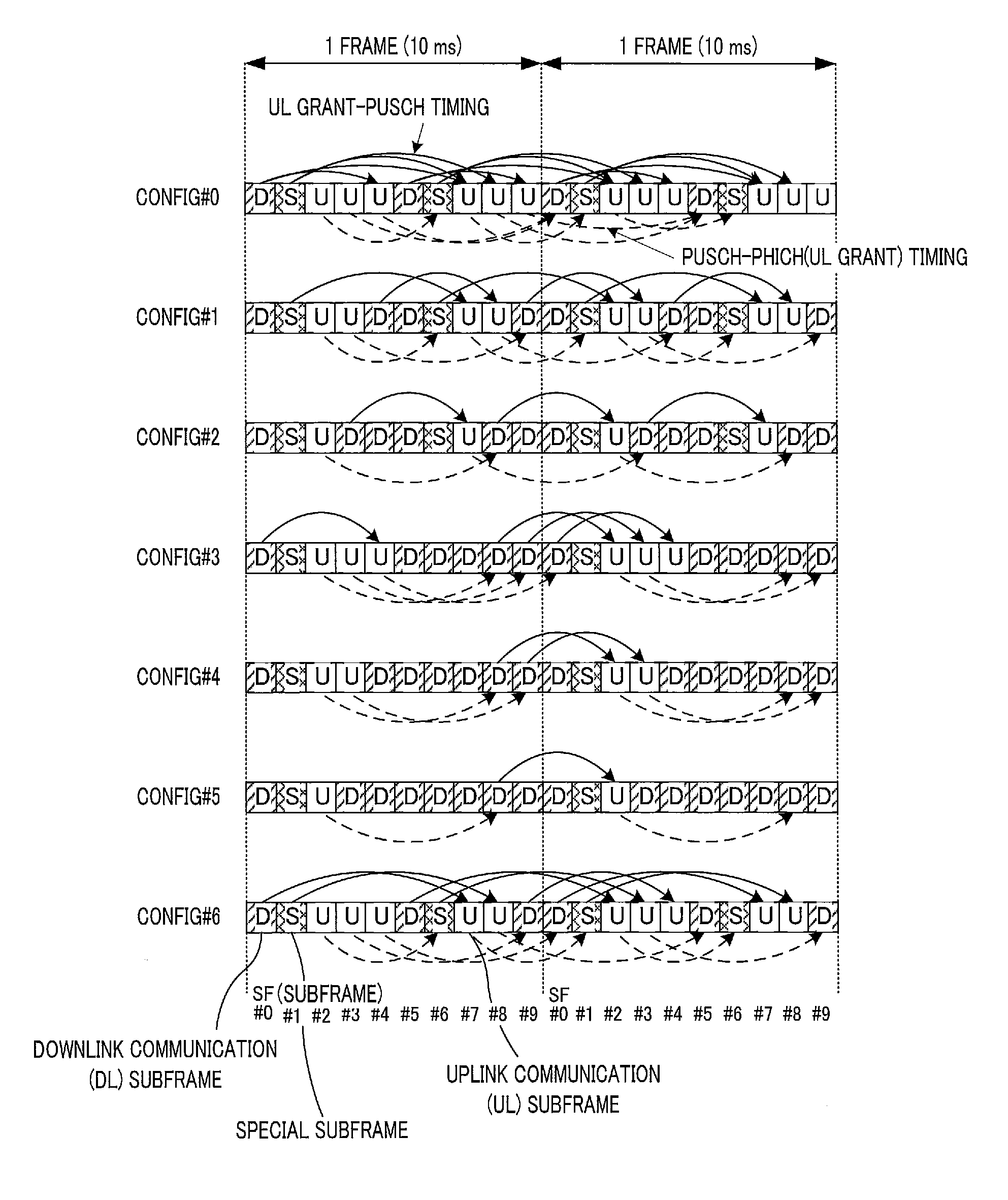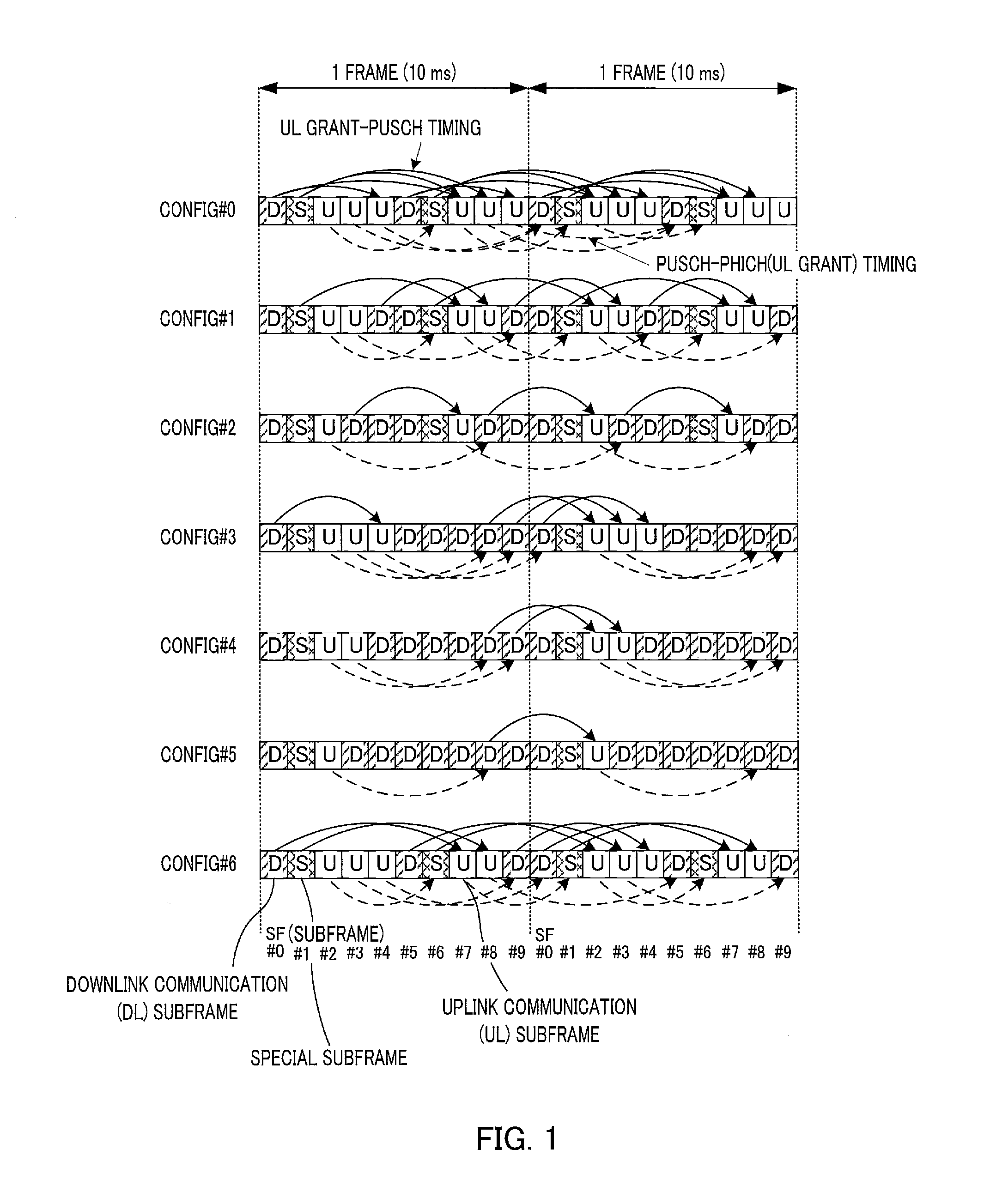Terminal apparatus, base station apparatus, reception method and transmission method
a technology of base station and terminal, which is applied in the direction of digital transmission, data switching network, wireless commuication services, etc., can solve the problems of difficult control of phich interference with other cells, the inability of terminal to determine whether or not the received control information is received, etc., and achieve the effect of suppressing scheduling constraints on downlink control information (dci)
- Summary
- Abstract
- Description
- Claims
- Application Information
AI Technical Summary
Benefits of technology
Problems solved by technology
Method used
Image
Examples
case 1
[0096]A method of determining the number of PHICH resources by base station 100, and a method of determining the total number of PHICH groups and a method of detecting the PDCCH by terminal 200 (TDD eIMTA terminal) will be described using FIG. 10.
[0097]The UL-DL configurations of terminals in FIG. 10A and FIG. 10B correspond to the UL-DL configurations of terminals in FIG. 5A and FIG. 5B, respectively. In FIG. 10A, although a factor of the number of PHICH groups in subframe #3, 4, 8 and 9 of the TDD eIMTA terminal is represented by “x,” the value of “x” may be determined using one of the methods in which will be described later.
[0098]Here, the TDD eIMTA terminal (terminal 200) is first connected to a cell that supports TDD eIMTA using UL-DL configuration which is SIB1-indicated as UL-DL configuration for connection to a cell. The TDD eIMTA terminal may be changed to a different UL-DL configuration based on an instruction of base station 100 in the cell after the cell connection. Th...
case 2
[0118]The method of determining the number of PHICH resources in base station 100, the method of determining the total number of PHICH groups in terminal 200 (TDD eIMTA terminal) and the PDCCH detection method will be described with reference to FIG. 11 to FIG. 17.
[0119]In case 2, since the UL-DL configuration of the non-TDD eIMTA terminal is an uplink communication subframe, the TDD eIMTA terminal need not follow the factor used by the non-TDD eIMTA terminal and defined in the SIB1-indicated UL-DL configuration, that is, the total number of PHICH groups. Focusing on this aspect, methods 1 to 4 of setting the total number of PHICH groups (factor of the number of PHICH groups) for the TDD eIMTA terminal will be described hereinafter.
Method 1
[0120]In method 1, the total number of PHICH groups is determined based on UL-DL configuration for TDD eIMTA. That is, at the timings corresponding to case 2, base station 100 and terminal 200 use the factor of the number of PHICH groups defined f...
PUM
 Login to View More
Login to View More Abstract
Description
Claims
Application Information
 Login to View More
Login to View More - R&D
- Intellectual Property
- Life Sciences
- Materials
- Tech Scout
- Unparalleled Data Quality
- Higher Quality Content
- 60% Fewer Hallucinations
Browse by: Latest US Patents, China's latest patents, Technical Efficacy Thesaurus, Application Domain, Technology Topic, Popular Technical Reports.
© 2025 PatSnap. All rights reserved.Legal|Privacy policy|Modern Slavery Act Transparency Statement|Sitemap|About US| Contact US: help@patsnap.com



